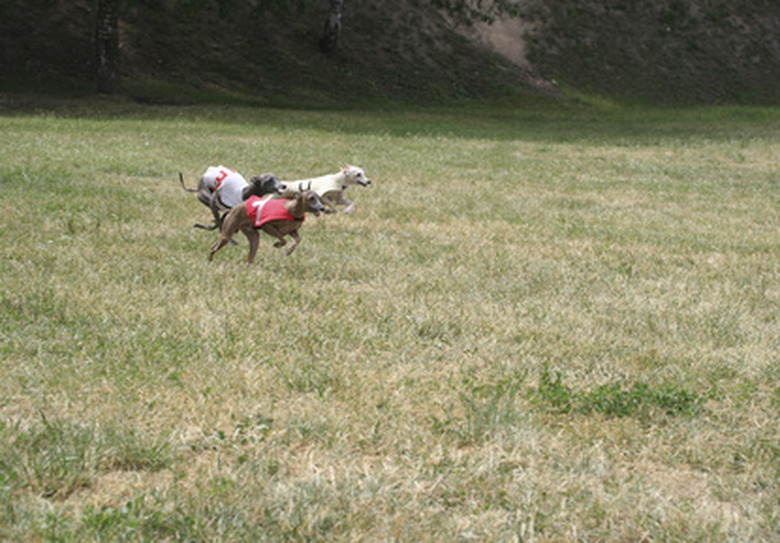Dog Toe Amputation
It is a difficult decision to choose amputation on your dog as a form of treatment. Toe amputation for your dog may be a safe alternative to treat some severe conditions, traumas, fractures and deformities, when other remedies fail. Your dog can live a pain free quality of life while compensating well without the affected toe.
Reasons for Toe Amputation
Reasons for Toe Amputation
Several medical conditions can result in toe amputation for dogs. According to Lowchenaustralia.com, dogs may suffer with nail conditions resulting from an autoimmune deficiency that can lead to bacterial/fungal inflammation. An affected nail may appear reddish and swollen with lesions, which is often an underlying condition called discoid lupus. According to GreyhoundWelfare.org, dogs also can acquire corns on the pads under the toe, which can be either fibrous scar tissue or a painful papilloma (wart), resulting from a virus. When other medical treatments have failed to remedy nail and corn conditions in your dog, a toe amputation may be the safest alternative.
Toe tumors can also result in amputation for dogs in some cases. The most common tumor to affect a dog's toe is squamous cell carcinoma (SCC), according to PetMD.com, which can be malignant and invasive. SCC comes from the skin around the nail, affecting the bone and tissue around it. In time the tumor will grow and ulcerate. Treatment typically requires toe amputation to remove the tumor, followed by chemotherapy if the cancer metastasized.
Amputation Procedure
Amputation Procedure
After your vet completes extensive preoperative tests that confirm an amputation is required, the dog is anesthetized and the affected foot is prepped to remove fur and clean/sanitize the area. Once the toe is excised–or amputated–the wound is sutured and the foot is wrapped in a soft padded bandage. Your dog typically can go home the same day as the procedure, once it awakens from the anesthetic. Your veterinarian may prescribe pain medications and/or antibiotics for after care. The sutures are then removed approximately 14 days later.
After Care/Recovery
After Care/Recovery
After amputation, dogs typically do not have difficulty compensating for the lost toe. It may be necessary for your dog to wear a cone or Elizabethan collar in the few days after surgery so the wound does not get injured during healing. You should continue giving all medications to the dog per your veterinarian's advice until its sutures are removed. Dogs with toe amputation usually make a full recovery afterwards to live a normal life.
Other Treatment Options
Other Treatment Options
In some cases, toe amputation can be avoided if the condition is not too serious. For a nail condition that appears inflamed, your veterinarian will first try to treat the infection and prescribe an antibacterial/antifungal foot soak as well as antibiotic medications. The medication may need to be continued for up to six months.
For a painful corn, the preferred method is to hull (remove) the corn. Temporary methods are to soften and/or file it down, though the corn is prone to come back. In both of these conditions, if the toe injury is more serious and the other treatment does not work, amputation of the affected toe(s) may be a safer alternative.
In most case of tumors, toe amputation is the best option.
Breeds Prone to Toe Conditions
Breeds Prone to Toe Conditions
Some dog breeds are more prone to toe conditions, especially the larger breeds, due to their size and weight on their feet. Breeds that have been known to encounter toe problems requiring toe amputation include greyhounds, Labrador retrievers, Vizslas, German shepherds and Great Danes.
Always check with your veterinarian before changing your pet's diet, medication, or physical activity routines. This information is not a substitute for a vet's opinion.
